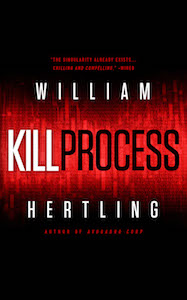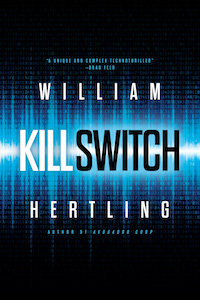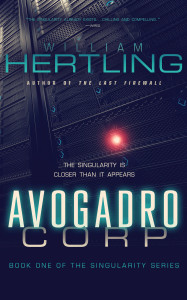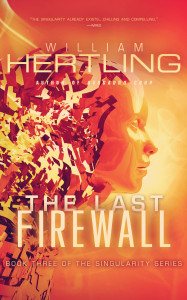The UX Driven Startup
Alexa Andrejewski
User Experience Designer, Adaptive Path
Founder Foodspotting https://www.foodspotting.com
- Slides available here
- Woke up one morning with a great idea
- Why are we always rating restaurants, why not rate individual dishes?
- How can people learn about the foods around the world.
- “Yelp for dishes”
- At Adaptive Path, would help companies figure out what to build before they build it. Figure out their experience strategy. Interaction design: flow of the product.
- The only problem was….Couldn’t actual code anything.
- Ended up spending 6 long months looking for a cofounder.
- Everyone she knew was a experience designer, didn’t know any developers.
- Critical thing: get out of your immediate social group.
- But these 6 months gave a chance to refine, communicate, and validate vision.
- Ate out a lot, carried a notebook everywhere. Asked people what they liked about their food, and how they would rate it, and what they would say about it.
- But the time she did find a cofounder, the product had evolved a lot. It started looking like Yelp, but what resonated with people was the visual aspects: the photos of the food.
- When I did find a cofounder, we could hit the ground running.
- The cofounder was a Ruby on Rails developer. Didn’t have iPhone skills, but hired that out originally.
- What is the experience you want to create?
- The UX driven startup: Focus on the experience you want to create and let everything else support that.
/ Experience
/ Business
/ Product
/ Technology
————————– - Avoid common mistakes startups make
- Building something people don’t really want or need.
- example: Segway “It will change cities and create a new world”
- reality: it’s just novelty seeking tourists who use it. it doesn’t fit into people’s existing experiences.
- A UX Vision validates the experience and its fit
- Thinking Too Small
- Investors ask questions like: How does this get Big? What does success look like? What’s your world domination plan?
- They want to hear about what you want to big ultimately. If you just focus on what you can build tomorrow, that’s not a big enough vision.
- Moving Too Slowly
- Arguments of “this is the best design” , “no this one is” causes things to slow down.
- Vision: A concrete representation of where your product is headed. Can be words, images, or prototype. But it should be tangible.
- Having that gives you something to orient your path around, so that the decisions can go faster.
- Tools
- Coming up with a vision
- Communicate your vision
- Validate your vision
- Coming up with your vision
- Originally was considering a book.
- Contextual Interviews
- “Tell me about some of the highs and lows for your restaurant.”
- Yields understanding of pain points and opportunities you may not have considered.
- Ingredients: 10 people, 10 questions, notebook & pen
- How
- Meet people in context
- Ask open ended questions
- Use cues in environment
- Use discussion aids if you can.
- Examples:
- “draw me a timeline of your restaurant. what were some of the highs and lows of your experience. now tell me about those highs… tell me about those lows.”
- Make Believe
- Yields
- an outpouring of fresh ideas
- New ways to frame a problem
- A chance to taste whether an interaction feels natural in real life
- Ingredients:
- props, a friend, the real world
- example: Palm Pilot designer carried a block of wood around and considered what it would be like to use.
- How
- Act out some ways you’d use your product, using props to inspire and test ideas.
- Get out and enjoy everyday activities. –> makes it easier to interact with the product idea, rather than sitting in a room.
- Metaphor Brainstorming
- Yields:
- Interesting properties extracted from the metaphors
- Fresh ideas and perspective
- Ingredients
- Core concepts on big stickies
- Lots of small sticky notes
- How
- Think about each concept in isoltation
- Write down whatever comes to mind
- Deconstruct the metaphor: what characteristcs are interesting?
- Use the characteristics to get ideas?
- Example:
- For foodspotting, uses stamp collecting and coin collecting as metaphors for collecting, and the characteristics of stamp and coin collecting that are unique
- Artifact From the Future
- A concrete representation of where your product is headed. Something you can rally around.
- How
- Imagine the TechCrunch blog post in the future written about your product.
- Imagine the future splash page
- Communicating your vision
- Experience Principles
- Yields: Concise, memorable guidelines that inspire ideas, gives you a basis for decision-making.
- How:
- Brainstorm characteristics you want your product to embody
- Choose the ones that are unique to your product.
- Example:
- Foodspotting only talks about good food, not the bad food.
- Foodspotting lets you give a blue ribbon, not rate food.
- Foodspotting believes great food can come from anywhere, and we should celebrate it, not just from big cities.
- Experience Poster
- Yield: a pocket sized visual summary of what using your product could be like. Something you can use to sell your vision and vett your ideas.
- Ingredients:
- an elevator pitch
- descriptions of benefits
- principles, characteristics, and metaphors
- How
- Describe the benefits of your product
- Illustrate those benefits – capture the experience, not the interface.
- Thing about Nine Problems Your Product Sells: Just use stick figures to illustrate it.
- Pitch Kit
- Yields:
- a meaningful name
- a one setence ocktail party pitch
- a vision statement
- an “ah ha” reaction.
- How
- A few social events to practice at
- A few well known companies you can relate yours to (optional)
- Practice your answers to these question until you can get people to say “ah ha!” in a minute or less.
- Also, what is your bigger goal? e.g. Google is about organizing the world’s information, Facebook is about enabling people to build their social relationships.
- Validating Your Vision
- Prototyping
- Yields: a tool you can use to guerilla test your product where you go. Used: InDesign.
- Ingredients: cardstock or index cards or imagemaps + webkit
- How
- Create a lightweight, smoke and mirrors prototype of your product
- Pull it out and ask people how and why they’d use it.
- Example:
- Drew up five different rating systems, from stars to numbers to blue ribbon: and asked people how they would use it, and respond to it, and what it meant to them.
- Design The Future Homepage
- yields:
- a concise summary of your product’s benefits in typical homepage form
- A way to test interest in your product
- ingredients:
- blank paper and model homepage
- or typical homepage template
- instructions
- sketch the homepage of the future – include name, taglione, top benefits, glimpse into data
- show people andask “how would you use this and why?”
- KISS insights: a tool that allows you to ask people a question about any webpage.
- Throw a page up on the web, with an email signup to determine interest.
- I Love this product because…
- yields
- perspective
- a reminder of what it’s all about
- ingredients
- Write “I love this product because…” up on a whiteboard.
- how
- finish this sentence as if your mom or end user were saying it
- show people your vision and ask them how they’d finish
- Reaching Your Vision
- Building a cupcake and build to a cake over time. Don’t build an unfrosted cake and give it to your friend.
- Another way of saying it: Build half a product, not a half-assed product.
- Once you have the big vision, step back and ask what is the cupcake version of that vision.
- Pick a few most essential features, and ensure that they work really.
- Design principles should drive ideas. If the principle doesn’t drive ideas (.e.g “simple and easy to use”), then it’s not a useful principle. Everyone wants their site to be easy to use. Also, the principles should be unique to your product.





